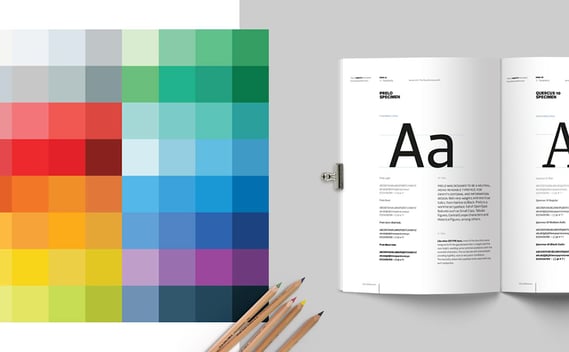Creating a strong visual identity is paramount for brands looking to distinguish themselves in a crowded marketplace. Beyond just a logo, a visual identity encompasses the complete visual aspect of your brand, including color palettes, typography, and imagery, all of which work in harmony to convey your brand's essence. Here's how you can build a visual identity that resonates deeply with your audience and stands the test of time.
1. Understand Your Target Audience and Brand Personality
Before diving into the design, it’s crucial to understand who you are designing for and what your brand stands for. Your visual identity should reflect the preferences of your target audience while embodying your brand's personality and values. This alignment ensures your visual identity resonates with the right people and accurately represents your brand ethos.
2. Conduct Comprehensive Market Research
Analyze your competitors and the current market trends to identify opportunities for differentiation. Understanding the competitive landscape helps in crafting a visual identity that sets you apart, ensuring your brand is both unique and relevant.
3. Develop Your Brand’s Core Elements
Logo and Color Palette
While the logo isn’t the entirety of your brand identity, it's a critical component that aids in brand recognition. A well-designed logo and a thoughtfully chosen color palette can significantly impact customer perception, invoking the desired emotional response and reinforcing your brand’s messaging.
Typography and Imagery
Select fonts and imagery that complement your brand's tone and personality. Consistent use of typography across all your communications strengthens your brand identity, while cohesive imagery helps tell your brand's story more effectively.

4. Craft a Compelling Brand Story
Your brand story is the foundation of your visual identity, weaving together your values, history, and mission. It should connect with your audience on an emotional level, making your brand more relatable and memorable.
5. Define the Purpose and Role of Your Visual Brand Identity
Consider the various platforms where your visual identity will be applied, from digital to print, and ensure versatility and consistency across all mediums. This clarity helps in creating a flexible yet cohesive visual identity.
6. Document Your Brand Visual Identity with Guidelines
Create a brand style guide to maintain consistency in how your visual identity is applied. This document should detail the use of logos, color palettes, typography, and other visual elements, ensuring anyone working on your brand maintains uniformity.
7. Final Analysis and Application
Before finalizing your visual identity, ensure it’s distinct, scalable, and cohesive. Then, apply your new visual identity across all brand touchpoints, from your website to social media, packaging, and beyond, to present a unified brand image.
A well-executed visual identity revamp goes beyond aesthetics, serving as a strategic tool for storytelling and engagement. By thoughtfully implementing the components of visual identity and aligning them with your brand strategy, your brand not only captures attention but also leaves a lasting impression.
Is your brand ready for a visual identity makeover?
At A2Z Media, we specialize in crafting compelling visual identities that resonate with your target audience and amplify your brand’s impact. Contact us today to begin your brand’s transformation.
For more insights on navigating the complexities of Branding and Design, don't miss our related blog, "5 Crucial Mistakes to Avoid in Branding and Design," where we explore pivotal strategies to ensure your brand’s integrity and appeal remain uncompromised.




